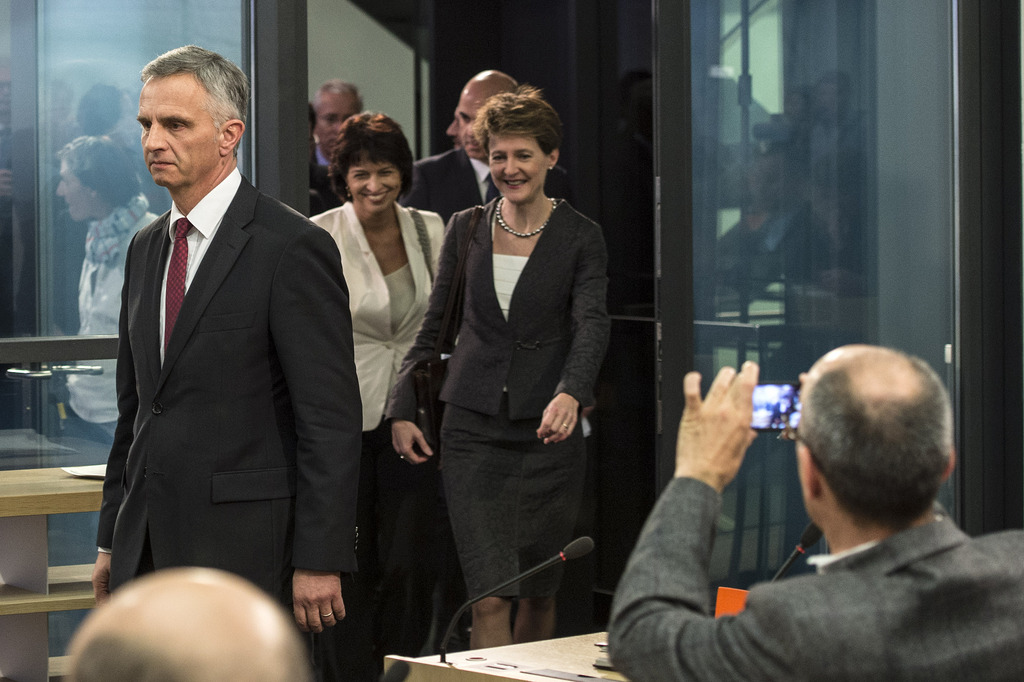
Swiss present timetable for immigration changes

The Swiss cabinet has laid out an initial roadmap for the implementation of Sunday’s vote to curb immigration from the European Union. A full plan will be drawn up by the end of June and a draft law is expected before the end of the year.
Meanwhile, ongoing talks will be held with the EU concerning bilateral relations and the agreement on the free movement of persons, the government announced on Wednesday. It hopes to clarify the situation with regard to other bilateral negotiations already under way, it added.
On February 9 voters in Switzerland narrowly approved a rightwing proposal – with 50.3% of the popular vote and the required majority of cantons – to impose limits on the number of migrants in breach of an agreement with the EU.
The move by the Swiss People’s Party – known for its anti-foreigner and anti-EU agenda – will see the reintroduction of quotas, as well as a national preference when filling job vacancies and restrictions of immigrants’ rights to social benefits.
The initiative also stipulates that Switzerland will have to renegotiate its bilateral accord with the EU on the free movement of people within three years or revoke it. This in turn could threaten other bilateral agreements with the EU.
In the run-up to the vote, backers had argued Switzerland could not cope with a further increase in the number of immigrants, including asylum seekers, putting an undue strain on the country’s welfare system, housing and traffic infrastructure. Over the past few years the resident population of Switzerland has grown by about 77,000 people annually as a result of immigration, mainly from EU member countries.
The vote was a neck-and-neck race showing a clear divide between the different language regions of the country and between the urban and more rural population. A majority in the German- and Italian-speaking parts voted for the restrictions, while the French part came out against.
In order to coordinate the timing and substance of the coming changes to the Swiss immigration system, the government has commissioned the foreign ministry to take up contact immediately with the institutions of the EU and the member states.
The deal on the free movement of people between Switzerland and the EU came into force in 2002 and is a key element of the first package of bilateral accords between the two parties. Under the deal, nationals of Switzerland and EU member states are entitled to choose their place of work and residence within the territories of the signatories.
The Swiss electorate has voted three times so far on the free movement of people. In May 2000, it approved a first bilateral package and with it the free movement accord by a large majority. In 2005 and 2009, voters approved the extension of the treaty to new EU member countries, mostly in eastern Europe. Votes are also due on the planned extension of the accord to the new EU member state Croatia.

In compliance with the JTI standards
More: SWI swissinfo.ch certified by the Journalism Trust Initiative


























You can find an overview of ongoing debates with our journalists here . Please join us!
If you want to start a conversation about a topic raised in this article or want to report factual errors, email us at english@swissinfo.ch.